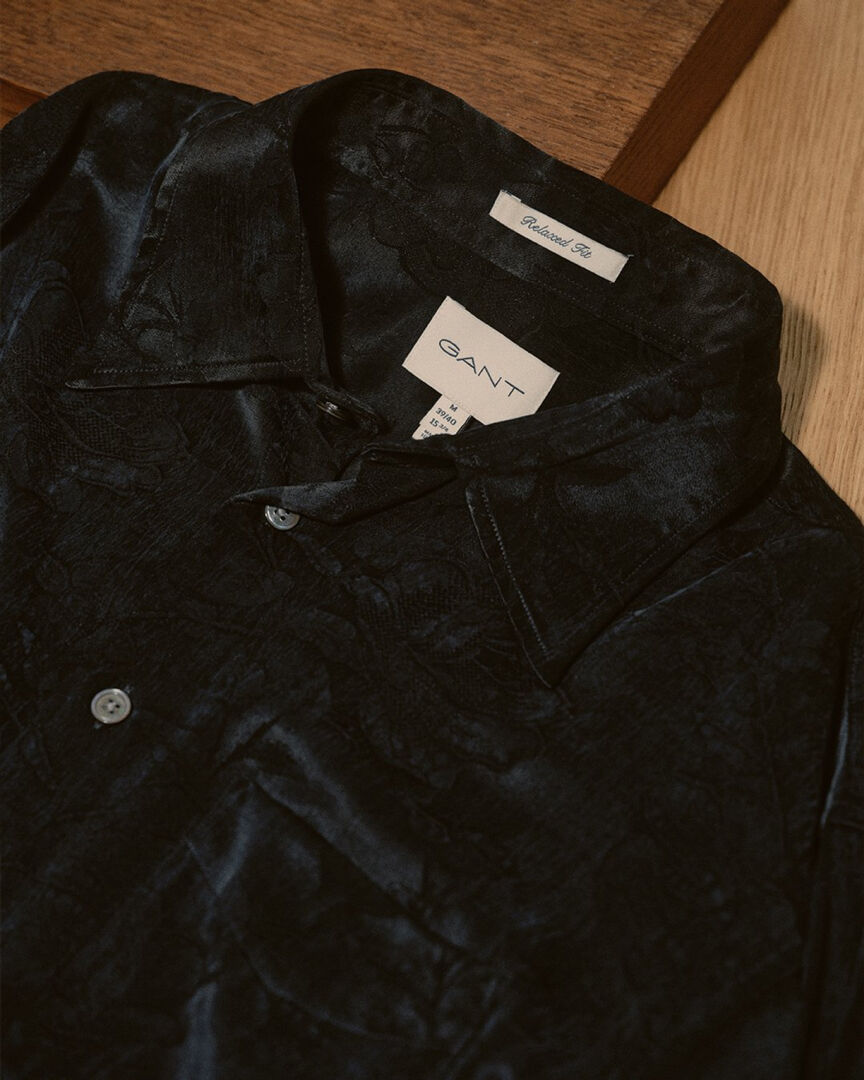Care Guide
In line with the GANT 7 Rules initiative, we developed a Care Guide that outlines the best practices for product care. With just a little extra love, garments can be refreshed to experience a longer-lasting life.
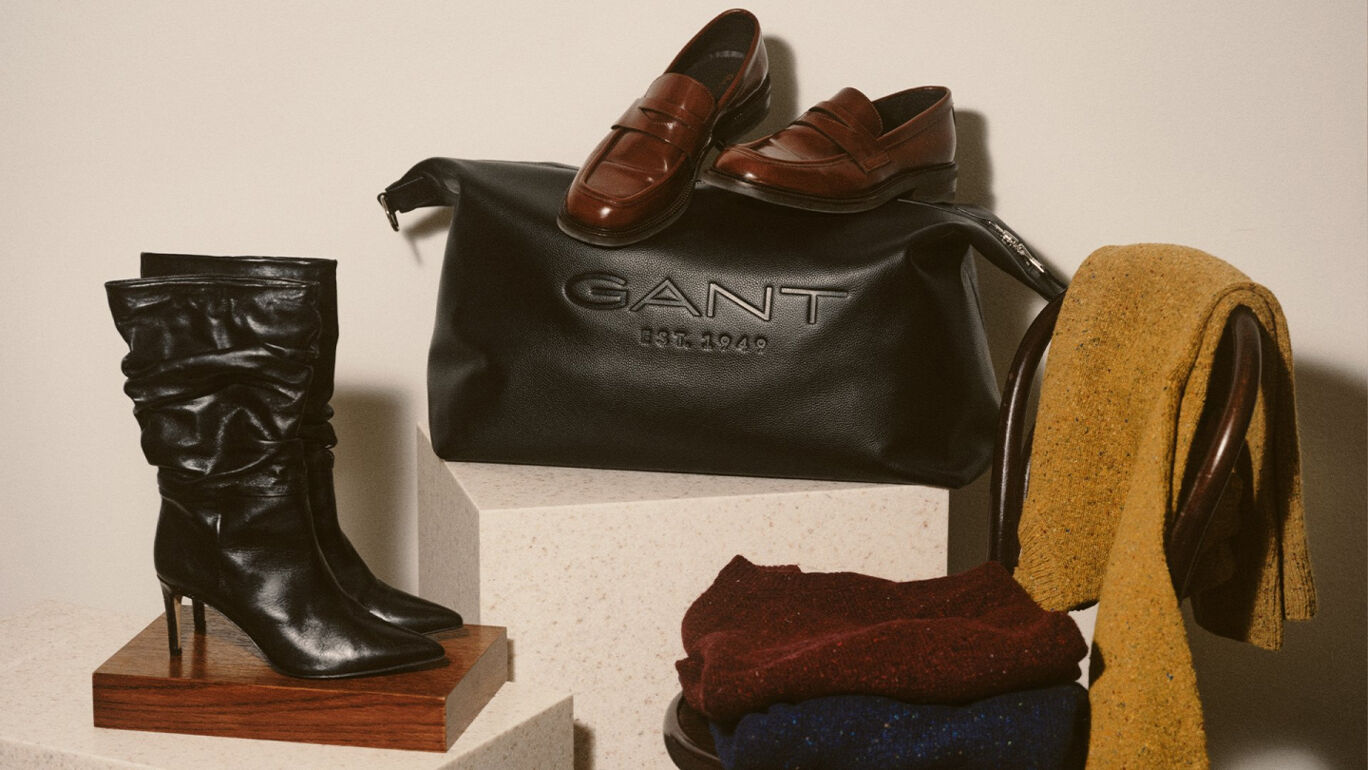
Minimizing laundry
Two-thirds of the environmental impact from apparel occurs during consumer use. A way to decrease this impact is to change the way we wash and care for our clothes. The more you wear a garment between washes, the more you reduce the environmental impacts that occur during its life cycle. Rather than running numerous small loads of laundry, collect your garments to run larger, fuller loads instead. In doing so, you can save energy, water, time, and money.
Mindful washing
When washing and caring for your garments, always follow the care label symbols and instructions that are attached to your garment. These instructions have been designed to help you keep your product in the best shape possible by considering specific factors such as color, print, construction, and end-use.
Small, mindful changes can make a large environmental impact. Many washing machines have an option for an extra rinse cycle which consumes extra water, however, if you measure out the correct amount of detergent or washing powder needed, then an extra rinse isn’t necessary. Always make sure to empty pockets, close zippers, and separate new colored garments from lighter colors when washing for the first time. Spot treat stains immediately. Natural materials tend to absorb more, meaning the longer you wait, the harder it gets to eliminate a stain. For a gentler approach that protects the fabric’s fibers, we also recommend air drying over heated drying and steaming over ironing.
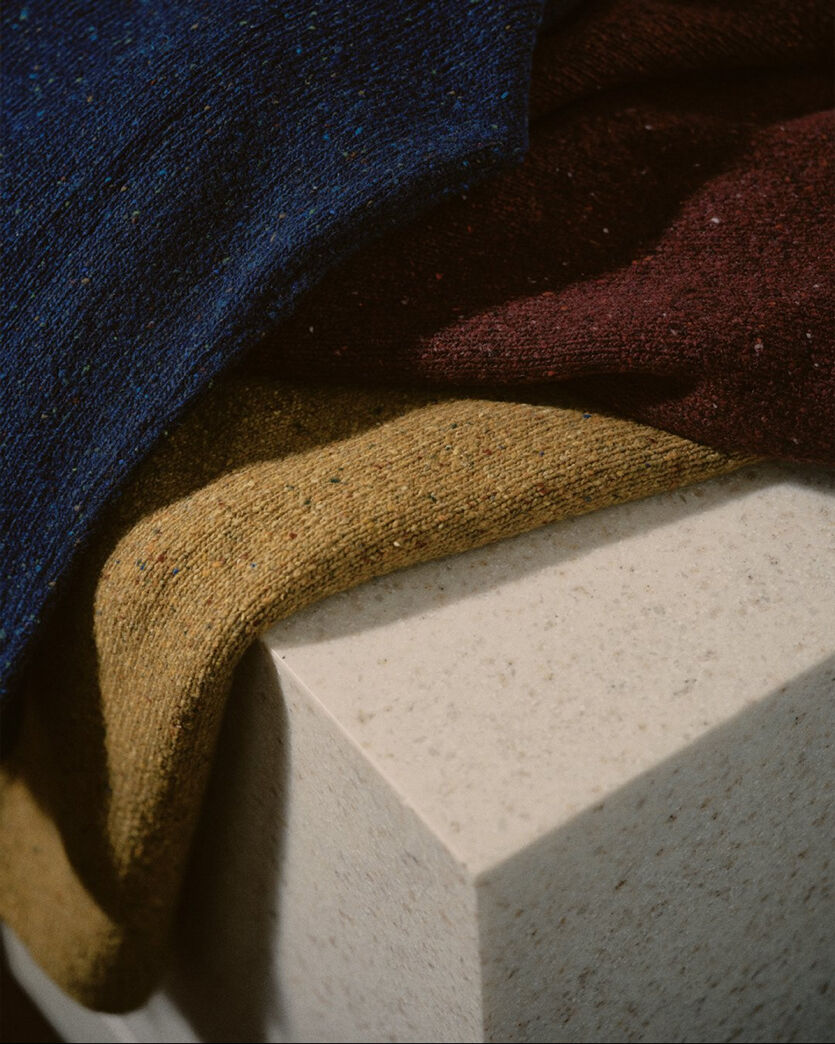
Materials
BREATHABLE. COMFORTABLE. VERSATILE.
Cotton
A natural and versatile fiber, cotton accounts for almost 80% of the total material used by GANT, with 100% of our cotton also being responsibly-sourced.
Wash To reshape, give garments a gentle stretch when they come out of the wash.
Dry To avoid shrinkage, air dry garments flat or on the line. When washing and drying jeans, turn them inside out to avoid fading.
Store Garments made of natural fibers such as cotton should be kept in a dry place.
Extra tip Avoid ironing embroideries and prints on all cotton garments.

LIGHTWEIGHT. RESISTANT. DURABLE.
Polyester & Polyamide
Polyester and polyamide are synthetic materials that are often used in blended fabrics.
Wash Always try to wash these garments inside out. For more delicate fabric mixes, we recommend washing them in a laundry bag.
Dry Air dry or dry at a low temperature to prevent heat damage.
Store Polyester and polyamide/synthetic garments can be hung or stacked flat. If you fold polyester garments, they tend to wrinkle.
Extra tip To remove wrinkles, garments can be turned inside out and cool ironed or steamed.
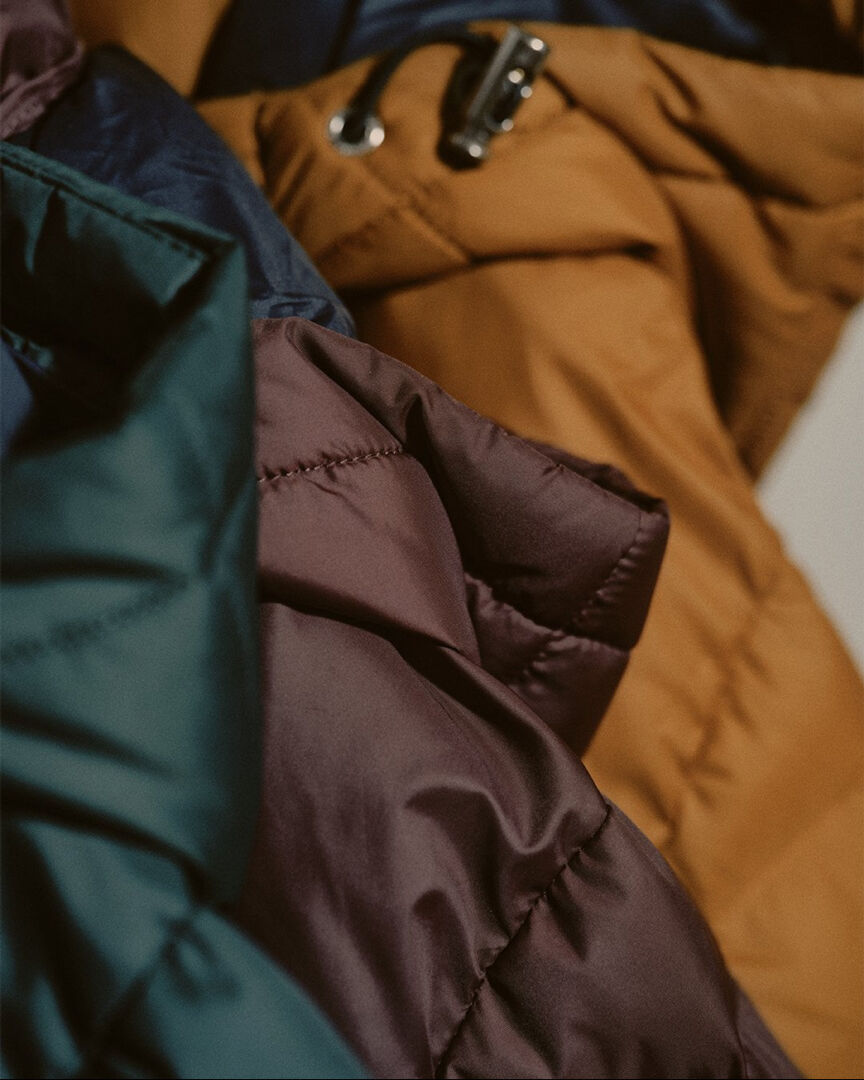
NATURAL. LONG-LASTING. INSULATED.
Wool
A natural barrier to wind and water, wool works to simultaneously provide warmth and allow breathability.
Wash Most wool garments do not need to be washed often and can simply be spot cleaned and aired out if necessary. However, if washing, we recommend using a protective bag to avoid snagging and felting.
Dry Wringing wool garments can also cause the fibers to stretch, so always dry them flat on a towel to absorb excess moisture.
Store We recommend folding knitwear and storing it in drawers with mothballs to preserve its original condition.
Extra tip Through natural use and wear, it is common for even the highest quality of wool to bobble and pile. Using garment-care brushes and combs are a great way to remove these small balls of fiber that form on the surface of your knitwear.
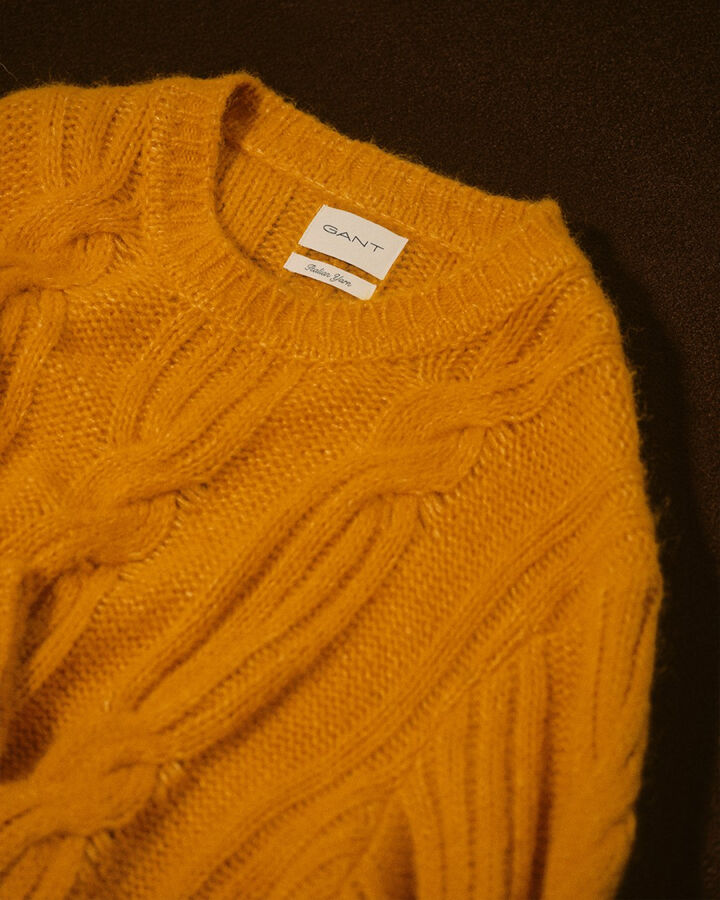
HARD-WEARING. FLEXIBLE. SMOOTH.
Leather
Made from a tanned hide, leather is admired for its durability, unique characteristics and irregularities.
Wash Perceptible to damage from oily products, or perfume and alcohol-based products, garments that require a deeper clean should be taken to a specialist leather dry cleaner. For light stains, leather can be spot cleaned with a slightly damp cloth.
Dry Between wears, we recommend allowing your garments to air out and hang to avoid wrinkling.
Store Keep leather away from humidity, heat, rain, chemicals and sharp objects.
Extra tip To keep its supple qualities, condition with a specialist balm and buffer gently.
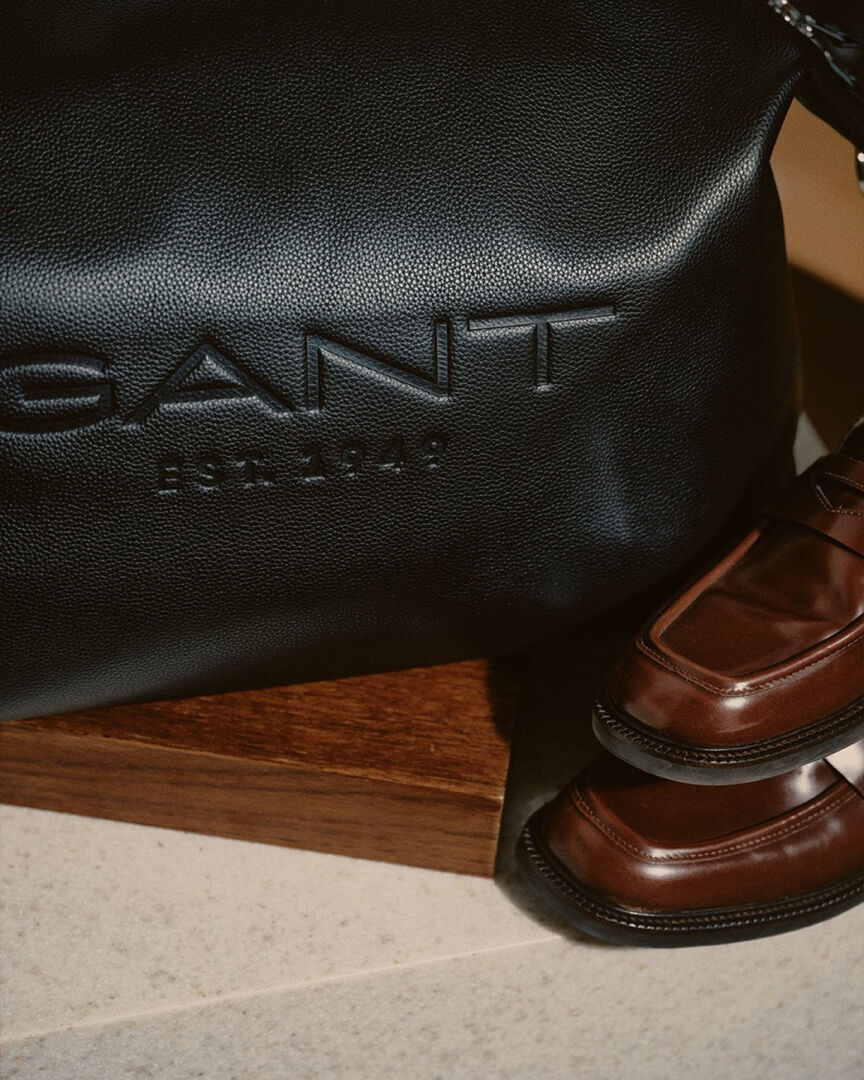
DELICATE. FINE. FLUID.
Silk
A natural protein fiber, silk is a delicate and luxurious fabric that has been around for thousands of years.
Wash Due to its delicate nature, you should always wash silk garments with extra care and follow the specific instructions outlined on the care label. If washing, do not soak as the color can be damaged.
Dry Avoid tumble drying silk and try to dry it flat on a towel. If fit for ironing, turn the garments inside out and use the lowest temperature setting, or simply hang them in the bathroom and let the natural hot steam smooth them for you.
Store Store in a cool, dry and dark place. If stored in an area of sunlight without any protection, the material may become discolored and faded. For extra protection, use breathable cotton bags and avoid plastic boxes as they retain moisture that can attract bugs.
Extra tip As silk naturally breaks away mites, dust and other particles, this natural material doesn’t need to be washed as often as other materials. Airing your silk garments outside for a few hours can help to remove odors and save on a wash.
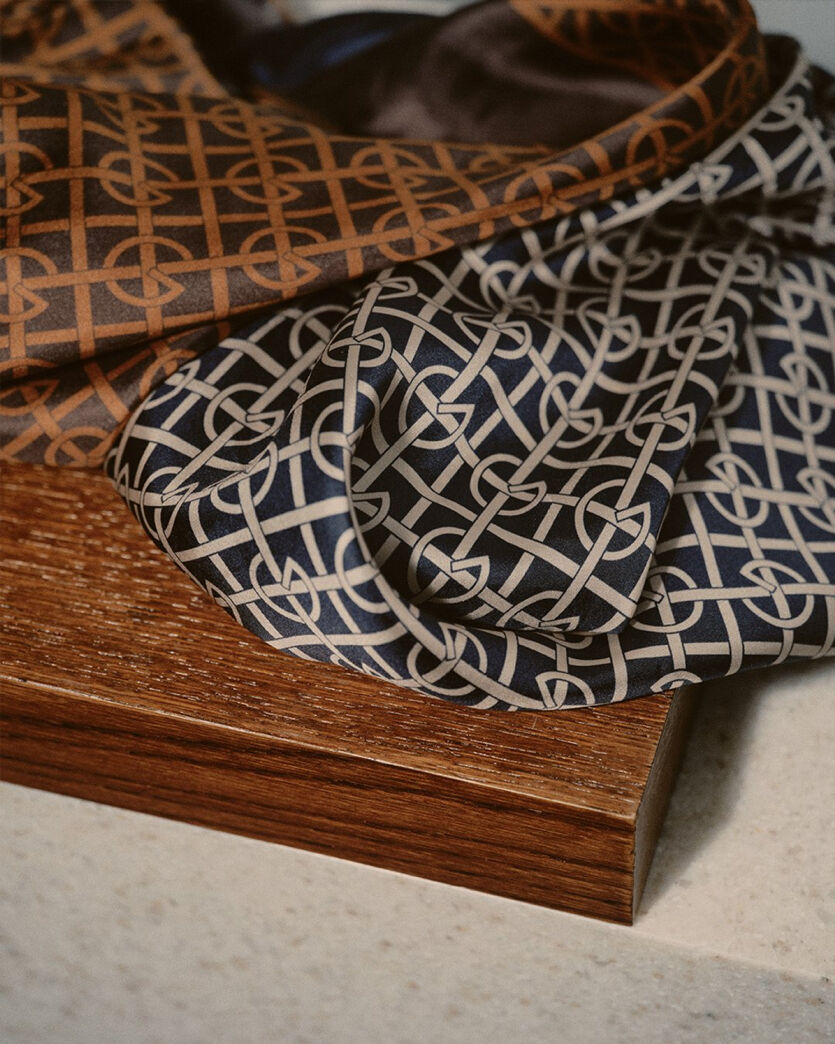
BREATHABLE. AGELESS. AIRY.
Linen
Softer with use and time, linen is a natural fabric that ages beautifully.
Wash For best results, turn linen garments inside out and wash them separately from other fabrics. It’s important to avoid mixing heavy items like jeans, hoodies, or towels in a load with linen textiles.
Dry Simply hang your linen garments in the bathroom and let the natural hot steam smooth them for you.
Store Garments made of natural fibers such as linen should be kept in a cool, dry place away from direct sunlight. Make sure the garment is completely dry to avoid mildew.
Extra tip Hang your linen shirts as repeated folding and ironing can wear out collars on linen shirts.

SOFT. ELASTIC. ABSORBENT.
Viscose
Viscose is a man-made cellulosic fabric made from natural raw materials. It offers a soft handfeel and an elegant shine and drape.
Wash Viscose has many different qualities and is very versatile. Additionally, viscose is often mixed with other fabrics, so washing instructions for different viscose garments can vary significantly.
Dry Lay your garments flat on a towel to absorb excess moisture, followed by air drying.
Store Once your garments are dry, store them in a cool place.
Extra tip After washing, do not wring as this can break the fibers. If stained, do not try to remove the stain on its own — wash the full garment instead.
